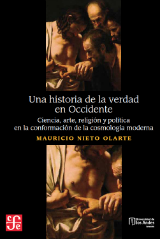WHO World No Tobacco Day, 31 May 2018
Vivian Mannheimer | Blog de HCS-Manguinhos

Allan M. Brandt Is the Amalie Moses Kass Professor of the History of Medicine at Harvard University where he teaches in the Department of the History of Science and the Department of Global Health and Social Medicine.
Over the last half-century, there have been successful efforts to reduce smoking in many countries.
However, Professor of the History of Medicine at Harvard University, Allan M. Brandt, highlights that “as smokers in higher income countries have quit, the companies have worked hard to find ‘replacement smokers’ in lower and middle-income countries”.
Allan M. Brandt is the author of The Cigarette Century: The Rise, Fall, and Deadly Persistence of the Product that Defined America (Basic Books, 2008), that explores how smoking came to be so deeply implicated in our culture, science, policy, and law.
In an interview for our blog, Brandt said that cigarette remains today the most deadly, legal product sold around the world. He also talked about his experience as a witness in court against the major tobacco companies in the case known as US v. Philip Morris and the implications of the rise of e-cigarettes for global public health.
1 – What is the relevance of history in thinking about the dangers posed by tobacco today?
The cigarette remains today the most deadly, legal product sold around the world. Historical studies of tobacco and its use, especially over the last century, offers a critical opportunity to understand not only essential questions of medicine, public health, and the nature of health risks, but also the relationship of culture, trade, promotion, and behavior. As I have attempted to show in my work, historical insights offer a number of approaches and strategies for reducing the harm of this deadly product.

Allan M. Brandt is the author of The Cigarette Century: The Rise, Fall, and Deadly Persistence of the Product that Defined America (Basic, 2008). The book was awarded the Bancroft Prize in American History and the Welch Medal of the American Association of the History of Medicine.
Further, understanding the historical processes by which the essential harms of smoking came to be understood as well as the successes and failures of their control, may offer important analogs for understanding other fundamental health risks like obesity and addiction.
2- In the last decade, the United States and many other countries have adopted restrictive antismoking laws and regulations. Is tobacco still a serious public health problem today?
There have been remarkably impressive and successful efforts to reduce smoking over the last half-century, especially in the US, Western Europe, and Australia. Nonetheless, rates of smoking in these countries continues to have a powerful impact on the burden of disease and overall morbidity and mortality. In the US today, there are more than 480,000 deaths each year associated with cigarette smoking. Although rates have declined from mid-century levels of nearly 50 per cent of all adults to under 20 per cent, it takes decades to fully see the effects of these changes.
Unfortunately, as a result of aggressive promotion and marketing efforts by multinational tobacco companies, cigarette use has actually increased globally during this same period of time. As smokers in higher income countries have quit, the companies have worked hard to find “replacement smokers” (their term) in lower and middle-income countries.
The rise of smoking in the Global South constitutes a health crisis of enormous proportions. The WHO estimates that during the course of this century there will be 1 billion deaths caused by tobacco use, a ten-fold increase from the number of deaths worldwide in the 20th century. The perception of the “end” of smoking in many countries has regrettably reduced the political will and much needed public health resources necessary to address this ongoing global pandemic.
3 – What were the issues and conditions that made possible the adoption of the WHO Framework Convention on Tobacco Control in 2003?
The adoption of the Framework Convention on Tobacco Control marks a genuine watershed in the history of global health. The first ever treaty developed and enacted by WHO, it created a platform of essential tobacco control measures for states to pursue individually and in concert to reduce the demand and supply of cigarettes.
The treaty was written and approved in a context in which the multinational tobacco companies had become widely viewed as pariahs, wreaking havoc on the health of populations in the name of greed, deceit, and corruption.
The widespread emergence of tobacco industry documents revealing corporate malfeasance that had become available through litigation in the United States, elicited outrage among the member nations of the WHO. In particular, the recognition of the aggressiveness with which the industry pursued new smokers in developing countries as cigarette use declined in affluent western nations, drew new advocates to innovative strategies for global regulation.
The Framework Convention encouraged a transnational effort to resist these efforts to expand cigarette use by the multinational companies; protocols centered on tax policies, reducing second hand exposure; and controls on packaging and marketing among other evidence-based interventions.
The FCTC has established a broader paradigm for the consideration of other critical needs in global health. At the same time, the companies have worked persistently to weaken and undermine the FCTC. Today, the treaty has been ratified by 181 nations representing more than 90 per cent of the world’s population; the US, where the tobacco industry lobby has been especially powerful, has regrettably never signed.
4 – You have been asked to testify in court cases against tobacco companies. What has been your experience as an historian?
In 2002, I was approached by attorneys for the US Department of Justice to serve as an expert witness in their racketeering and fraud litigation against the major tobacco companies; the case known as US v. Philip Morris. The DOJ lawyers wanted me to present my historical research about cigarette use, the rise of epidemiologic and medical knowledge, the behavior of the companies in deliberately obscuring these facts, and the burden of disease and death that they had promoted.
Convinced of the importance of the case—which sought to prove that Big Tobacco had engaged in a conspiracy to misrepresent the dangers of their product—I agreed to testify. I was spurred forward in part by the fact that several notable historians of medicine had agreed to testify on behalf of the tobacco companies.
Their principal argument, that there was serious and legitimate disagreement and skepticism within the scientific community—I judged to reflect a shoddy, even negligent, historical understanding of the process by which the dangers of smoking had come to be clearly understood by experts at mid-century.
I decided that it was critical to rebut the notion that historical scholarship supported the industry’s fraudulent contention that there was genuine uncertainty and doubt about the health impact of smoking, a ruse the companies had asserted for decades.
In 2003, I was deposed in the case and the following year I testified at the trial, which would last more than a year, that Big Tobacco was a “rogue” industry that had consistently violated the public trust, radically misrepresenting the harms of their product and its impact on public health.
It was enormously gratifying to have the chance to apply my historical skills and research in this litigation, which offered an important opportunity to trace the tobacco industry’s multifarious efforts to obscure the truth about the deadly harms of their product. As the court found, since the middle of the 20th century, the companies had colluded to lie about these risks; deceived the public with promises of safer products; all the while, aggressively marketing to children. Although the companies had produced volumes of internal scientific work demonstrating the addictiveness of tobacco, they continuously denied that this was the case, at the same time working to enhance the addictiveness of smoking.
The judge in the case ultimately deemed that the court’s reading of the law made it impossible for her to order monetary damages, however, the trial and her meticulous opinion had considerable impact on smoking regulation and public knowledge in the US and around the world. Her decision did force the major companies to acknowledge publicly their historical misdeeds and the harms they have generated. The ruling in the case was ultimately upheld by the US Supreme Court and the court’s written opinion has been widely influential in the promotion of additional tobacco regulation and litigation.
Tobacco litigation offers an essential tool for exposing the tobacco industry’s strategies for expanding cigarette. Historians will continue to have valuable opportunities to contribute to these legal processes as they evolve in the future. Furthermore, I think it is essential for historians to bring their work and insights to essential questions in the domains of policy law, and public health.
5-What are the implications of the rise of e-cigarettes for global public health?
The rise of new technologies for providing nicotine without burning tobacco, known as electronic nicotine delivery systems (ENDS), or, more commonly e-cigarettes, now threatens to disrupt more than a half-century of success in the tobacco control movement.
Since their introduction around 2005, e-cigs now account for more than $5 billion in yearly sales; by 2019 this figure is expected to rise to $15 billion. There is much that is not understood about these new nicotine products.
The companies that produce them (including Big Tobacco) have boldly asserted that they will significantly reduce the harms of smoking as current users switch to these “safer” products. But it remains unclear whether many smokers will use both combustible as well as e-cigarettes and what the impact on morbidity and mortality will be over time. Strikingly, e-cigs have been targeted to youth markets with sugared flavors like cotton candy, pina colada, and crème brulee.
The introduction of e-cigs has split the advocates of tobacco control between those committed to the aggressive reduction of smoking versus those who favor the notion of these devices to encourage “harm reduction.”
I worry that these products have the potential to “re-normalize” this rogue industry. Among my concerns is that Big Tobacco will successfully promote these new, expensive products in the global north, while at the same time forcefully marketing cheaper combustible cigarettes in the global south. This scenario would lead to an even greater burden of disease in lower and middle-income countries, enhancing vast disparities in health.
What we do know, is that Big Tobacco is already utilizing these products—whose risks are largely unknown—to assert that they are eager to assist in developing a “smoke-free world.” From a historical perspective, I view this assertion with the utmost skepticism. We have seen these nefarious strategies effectively implemented in the past—take for example the promise of filtered cigarettes and “lights.” The future will require a combination of historical memory, public health vigilance, and innovative global health regulation.
Brandt, A; Mannheimer, V. “The rise of smoking in the Global South constitutes a health crisis of enormous proportions.” História, Ciências, Saúde – Manguinhos blog, 2017. http://www.revistahcsm.coc.fiocruz.br/english/the-rise-of-smoking-in-the-global-south-constitutes-a-health-crisis-of-enormous-proportions/
See in Manguinhos:
Sobre la historia del hábito de fumar – Diego Armus describe su investigación sobre la criminalización de un hábito que durante décadas estuvo culturalmente celebrado.
Armus, Diego. Washington y Ginebra llegan a Buenos Aires: notas sobre la historia del hábito de fumar y su medicalización. Hist. cienc. saude-Manguinhos, Mar 2015, vol.22, no.1, p.293-302. ISSN 0104-5970







